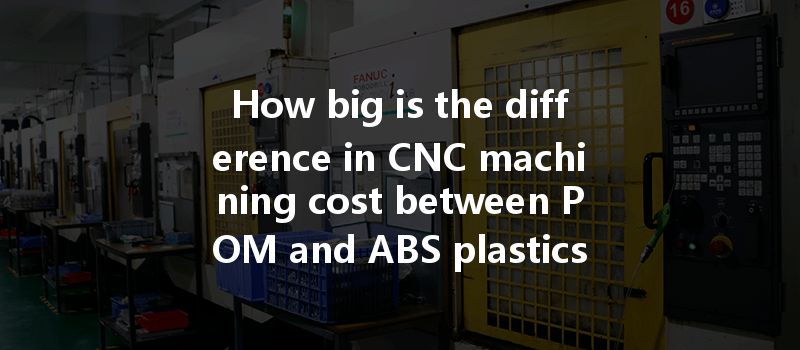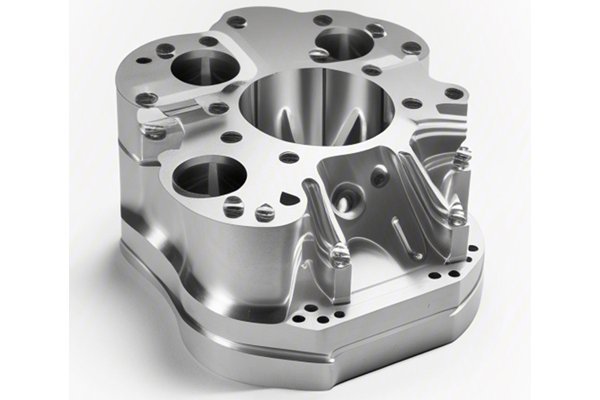Did you know that the global CNC machining market is projected to reach over $100 billion by 2025? This surge in demand signifies not just the growing need for precision manufacturing but also highlights the unique specifications and requirements that different materials bring to the table. Among these materials, POM (Polyoxymethylene) and ABS (Acrylonitrile Butadiene Styrene) are two prominent types of plastics widely used in CNC machining applications. But how much does the choice between these two plastics affect CNC machining costs? In this blog post, we will delve into the cost differences between CNC machining POM and ABS, explore the factors influencing these costs, and provide insights that can guide your material choices effectively.
Understanding CNC Machining
Before delving into the specifics of POM and ABS, it is essential to understand what CNC machining involves. Computer Numerical Control (CNC) machining is a manufacturing process that utilizes computers to control machine tools. This technology allows for the automation of processes, resulting in increased efficiency, precision, and repeatability. In essence, CNC machines execute a pre-programmed set of commands that can produce intricate parts from various materials with high accuracy.
The Basics of POM and ABS Plastics
To compare the costs associated with machining POM and ABS, we first need to understand the unique properties of each material.
POM (Polyoxymethylene)
POM, commonly known as acetal or polyacetal, is a thermoplastic that is renowned for its high strength, stiffness, and low friction properties. It is often used in applications demanding high precision and stability under mechanical stress. Furthermore, POM has excellent wear resistance and low moisture absorption, making it suitable for mechanical components, gears, and bearings.
Advantages of POM:
Disadvantages of POM:
ABS (Acrylonitrile Butadiene Styrene)
ABS is a popular engineering thermoplastic known for its impact resistance and toughness. It is extensively used in various industries, ranging from automotive to consumer goods. ABS can be easily machined and molded, making it a versatile choice for manufacturers.
Advantages of ABS:
Disadvantages of ABS:
Factors Influencing CNC Machining Costs
When comparing the CNC machining costs of POM and ABS, several factors come into play. These include material properties, machining complexity, tooling, lead time, and post-processing requirements.
The first and most obvious factor is the material cost. POM is generally more expensive than ABS due to its superior properties and demand in high-performance applications. Understanding the cost per kilogram can provide initial insight into the overall expense involved.
CNC machining can be straightforward or highly complex based on the part design. Parts made from POM may require different machining techniques or tooling compared to ABS. The complexity of the design will influence the machining time and the number of tool changes needed—both of which directly impact overall costs.
The tooling required for machining POM may differ from that required for ABS. POM’s toughness may necessitate specialized tools, leading to higher initial investments in tooling. Additionally, tools may have a shorter lifespan when machining tougher materials, incurring further replacement costs.
Lead time refers to the time taken from the start of the machining process to the delivery of the finished parts. For large production volumes, the efficiency of machining either material could heavily influence costs. POM may have a longer lead time due to its more complex machining requirements, whereas ABS tends to be faster and more flexible in production.
Post-processing often plays a significant role in the overall costs associated with CNC machined parts. The type of finish, coatings, or surface treatments required can differ between POM and ABS and can also affect the cost. POM parts may need additional finishing treatments to ensure the desired quality, while ABS is often smoother and more aesthetically pleasing right off the machine.
Cost Comparison
Now that we are familiar with the factors influencing machining costs, let’s summarize the basic cost comparisons between processing POM and ABS.
Material Price Comparison

Machining Cost Considerations
Example Cost Scenarios
To illustrate the differences effectively, consider a hypothetical scenario involving the production of identical components using both materials.
Assuming a production run of 100 parts:
Summary of Cost Differences
From the above scenario, it is evident that while POM offers superior technical properties, it substantially increases the overall cost. Conversely, ABS is the more economical option, especially for applications where extreme performance characteristics are not critical.
The Right Choice for Your Application
Given the cost differences and properties, the decision to use POM or ABS should align with the specific needs of your application. Here are some tips to guide you:
When to Use POM
When to Use ABS
In this extensive exploration of CNC machining costs between POM and ABS, we have illuminated the differences in material properties, production methods, and cost implications. The decision between using POM and ABS boils down to specific application requirements and budget. While POM offers superior mechanical properties, it is essential to weigh those benefits against the higher costs associated with its machining.
Understanding these distinctions is crucial for manufacturers and engineers who want to make informed decisions regarding material selection in CNC machining processes. Ultimately, choosing the right plastic material can lead to enhanced product performance, improved manufacturing efficiency, and significant cost savings.
As you reflect upon this information, remember that while cost is a key factor, it should not overshadow the critical importance of material properties suited to specific applications. The right choice not only optimizes your bottom line but also ensures the longevity and reliability of your products in the competitive manufacturing landscape.






